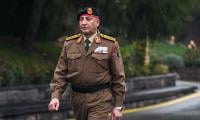Defying all projections and against all odds, Pakistan has successfully bent the Covid-19 curve. Slow rise, early peak and steep decline -- what is at work and how have we managed to surprise ourselves and the world? And, is it all over? Simple questions without simple answers.
At its height Pakistan witnessed: 31,681 PCR tests on June 20, and 6,825 positive cases on June 14, and highest positivity ratio of 23.90 percent on May 28. We had 581 critically ill patients on ventilators on June 21 and maximum daily deaths of 153 on June 20. From these heights we started a downward slide. The R0, the index of transmission of disease, at its height touched 2.47 in April which has now dropped to 0.7, which in simple words means that the outbreak is fading.
It soon became clear that the intensity of the outbreak, for unknown reasons, was different by default in South Asia than in the northern hemisphere. The numbers are simply juxtaposed. For example, the US being the largest economy in the world and the highest spender on health -- 17.5 percent of GDP -- and a country with a most advanced health system to date has seen 5.7 million cases and 178,000 deaths due to Covid-19.
Avoiding embarrassing spending-on-health contrast with the US and our under-developed health system, our cases by August 21 were 291,588 and deaths were 6,231. Such big differences cannot be just explained on the basis of how the US and we responded to the outbreak. There is something inherently different in the way the virus behaved there and the way it was here.
Providence supported as Pakistan also worked hard to contain the spread of the virus. Sensing the threat of the potential global pandemic, we started early. I called the first meeting of a Core Committee on Covid-19 as early as January 15 and immediately started reinforcing our Points-of-Entries (POEs) and ensured strict health screening of all incoming passengers.
We were caught between China (Wuhan) and Iran (Qum), two ravaging epicenters of the outbreak then and yet our first case was confirmed as late as on February 26. On March 13, the national effort was escalated by calling the National Security Committee (NSC) meeting which led to the creation of a National Coordination Committee (NCC) and eventually the National Command and Operation Centre (NCOC) was established on March 27.
As a civil-military arrangement for national coordination and spearheading a national response, the NCOC has worked marvellously well. Immediately after the NSC meeting, a major lockdown was announced whereby large gatherings were banned, our borders, educational institutions and marriage halls were closed. Every morning, at 10am, the NCOC has been meeting since its creation, prodding through the latest data, studying epidemiological curves, delineating trends, discussing threadbare with provincial leadership, making bold decisions and then ensuring implementation. This keen and sincere application and constancy of effort has certainly paid off.
The prime minister’s genuine concern from the beginning about the effect of the general and prolonged lockdown on daily wagers guided the direction of the government’s response. This was despite immense pressure from the media and the elite for a complete shutdown of the country. Out of this concern developed a largest ever emergency cash transfer program, Rs144 billion, to address the economic hardship faced by 12 million poor families. Each family received Rs12,000. The government also provided a Rs1.5 trillion economic stimulus package. These initiatives provided great relief to the have-nots in these hard times. Throughout this response effort, we have been guided by a great concern to strike a balance between lives and livelihoods.
Countries’ varying response to the same disease epidemic is a function of leadership, governance, political-economy, sociology and health system. This sets a context within which the classic interaction between the pathogen, host and environment takes place and the extent of spread of disease and the attendant damage are determined.
Despite many shortcomings, Pakistan’s response to Covid-19 has been impressively effective. Response strategy has been calibrated with evolving situations. Continuous development of national guidelines and SOPs; reinforcement of POEs; enhancing testing capacity; Tracing, Testing and Quarantine; smart lockdowns; incessant risk communication employing diverse channels; national helpline; national information portal; regularly informing people and urging them to exercise precautions; major international procurements and efficient delivery by NDMA; ensuring availability of Personal Protection Equipment (PPE); ramping-up of critical care in hospitals; training of health workers in critical care and use of PPEs; “WeCare” program for front-line health workers -- to name a few important interventions. The cumulative effect of all these interventions has made Pakistan a ‘bright-spot’ that is now being hailed internationally.
Daily meticulous disease surveillance, analysis and reporting deserve a special mention. Thanks to the Pakistan Polio Eradication Program and its extensive national infrastructure which served as a basis on which Covid surveillance is built. National and provincial teams work 24/7 to bring to the table every morning latest data which acts as a fodder for appropriately modifying response.
The cardinals of this grand national effort have been data-driven decisions; total transparency of information; appropriate use of digital technology; generous use of resources by the government and exemplary coordination between federal, provincial and areas leadership despite difficulties of the 18th Amendment.
Numerous other factors have been talked about as per their impact on lowering the spread of disease. Some are better understood than others. These include: a younger population in Pakistan; effect of temperature, humidity and ultraviolet rays; immunity profile of people; cross-immunity due to infections from common cold coronaviruses and other vaccinations like BCG and OPV; genetic mutation in the virus and factors that we even don’t know (X-factor).
It will be a grave mistake to consider that Covid-19 is over in Pakistan. Resurgence is a possibility as it has happened in many other countries. There is no space for any complacency or lowering of our guard. We know that fewer people in low density districts were exposed to Covid-19 and the potential of a resurgence is highest there.
In the longer run, we will be judged by how diligently we used the lessons learnt from dealing with Covid-19 to strengthen our healthcare system and essential public health functions.
The writer is former special assistant to the PM for health.
Email: zfmrza@yahoo.com















